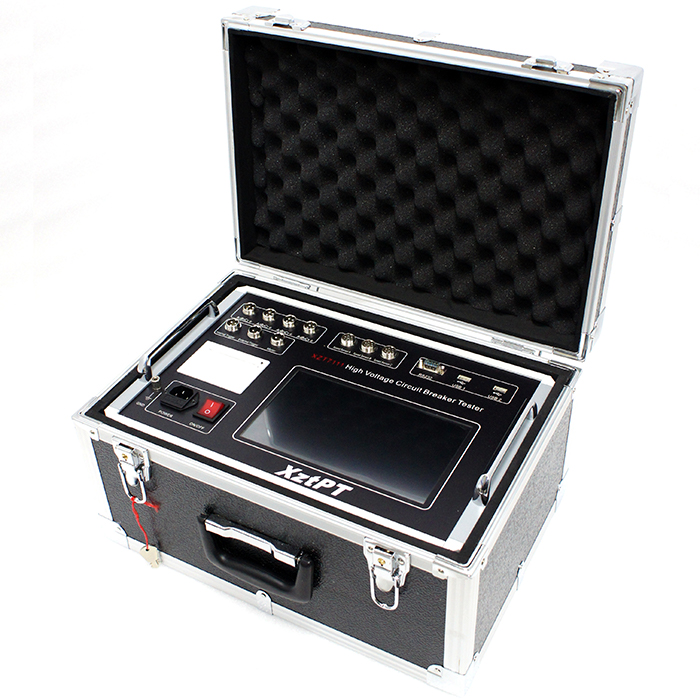English




The switch characteristic tester is widely used in the performance evaluation and maintenance of power system switchgear, and its core application scenarios are as follows:
1. Production and factory inspection of high-voltage switchgear
Quality control: Mechanical characteristic parameters (such as opening and closing time, speed) of circuit breakers, isolating switches, etc. are tested on the production line to ensure compliance with standards (such as GB/T 3309, IEC 62271).
Example equipment: vacuum circuit breaker, SF6 circuit breaker, etc.
2. Equipment installation, debugging, and acceptance testing
Calibration before commissioning: After installing the new switch, verify the opening/closing time, synchronicity (three-phase action time difference, usually required to be ≤ 2ms), and travel characteristics to avoid refusal or misoperation due to improper installation.
Application scenario: Debugging of switchgear in the construction or expansion of substations.
3. Regular preventive maintenance (status check)
Routine testing: In the operation and maintenance of the power grid, the switch action characteristics are tested periodically (such as once a year) to monitor parameter degradation caused by aging of the spring mechanism, insufficient lubrication, etc. (such as exceeding the opening time tolerance).
Typical parameters: Analysis of coil current waveform, diagnosis of electromagnetic mechanism jamming or coil faults.
4. Fault diagnosis and repair verification
Abnormal troubleshooting: For faults such as switch refusal to open, close, and bounce too much, through time travel curve analysis, the positioning mechanism is stuck, the contact is worn, or there are auxiliary contact problems.
Repair confirmation: After repair, retest to ensure that the action time (such as closing time ≤ 50ms ± 10%) and speed return to normal range.
5. Evaluation after equipment overhaul or technical transformation
Performance verification: After replacing the operating mechanism and contacts, the dynamic characteristics of the switch should be tested, and the data before and after the modification should be compared to ensure the effectiveness of the modification (such as meeting the opening speed standard).
Case: Mechanical characteristic calibration when upgrading traditional oil circuit breakers to vacuum switches.
6. Strict testing of high reliability power facilities
Key facilities: power plants, nuclear power plants, high-speed rail traction substations, and other places that require extremely high power supply continuity. Through high-precision testing, power outages caused by switch misoperation can be avoided.
Strict standards: Nuclear power switches may require a synchronization error of ≤ 1ms and require the use of high-precision testers.
7. Research and development, as well as teaching and training
R&D support: Collecting action data during the design of new switches to optimize the dynamic performance of the mechanism (such as shortening the opening time while suppressing bounce).
Teaching application: Demonstration of switch mechanical characteristic testing methods and fault simulation analysis in practical training at electric power colleges.
XZT 7111 High Voltage Circuit Breaker Tester
